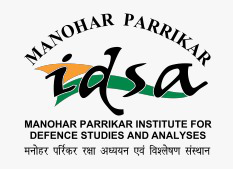India’s Season of Summits
The world needs India as a balancer – in trade, as a market, as an alternative model, and as a world power.
- Sujit Dutta
- December 30, 2010
The world needs India as a balancer – in trade, as a market, as an alternative model, and as a world power.
This Brief uses irony to communicate five propositions, that can be found in several discourses on Sino-Indian ties. It evaluates these propositions in the light of the tangible and intangible gains from Premier Wen Jiabao’s second official visit to India.
China has all along been testing the limits of India’s tolerance and restraint and has once again given the Indian foreign ministry much home work for the next few months.
Primer Wen’s visit should be devoted to enhance mutual trust and confidence but this should not be done by brushing longstanding problems under the carpet.
An initiative focusing on collaboration and innovation (COIN) in energy, health, infrastructure, and knowledge-intensive industries has potential to overcome emerging fissures and enhance India-China economic relations.
The importance of the RIC trilateral initiative lies in the fact that India, Russia and China, as countries with growing international influence, can make substantive contributions to global peace, security and stability.
The meeting between Dr. Manmohan Singh and his Chinese counterpart Wen Jiabao on the sidelines of the ASEAN Summit in Hanoi on 28-29 October has brought about a warming of the atmosphere and may lead to progress in Sino-Indian relations.
China’s moves concerning Kashmir evoke apprehension regarding retrogressive changes in its Kashmir policy, designed to give it a hold over India. The best case scenario for China is that the Kashmir issue is never resolved; and if this issue inches towards any kind of resolution, that China should be considered a party to the Kashmir dispute.
The paper provides three plausible explanations for the increase in China’s aggressive postures in India’s eastern sector and a few policy recommendations are offered for consideration.
Shaping responses towards the issue of Chumbi Valley would perhaps require a penetrating understanding of the “reality” that defines China’s political trajectory in South Asia in coming years.



